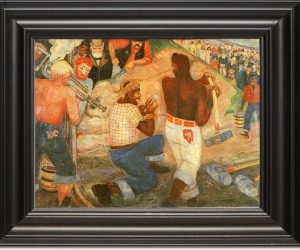
 Do you know what your client’s art is worth?
Do you know what your client’s art is worth?
Does your client know that his or her Group of Seven painting, insured at $5 million, is now actually worth $15 million?
Brokers should be advising their clients to have more regular appraisals done of their insured art, including collections of fine wines, stamps, coins, etc., says a Canadian insurer of fine arts.
Anton Antonov, assistant vice president of XL Group plc, and managing underwriter of XL Fine Art & Specie in Canada, says clients should be having their art collections appraised at more regular intervals, ideally every year. Practically, however, given the cost associated with art appraisals, clients will likely take five years to appraise items, rather than the three or four years that insurers recommend.
But the art world moves quickly, and art is ultimately worth whatever someone is willing to pay for it.
A 2012 report from The European Fine Art Foundation (TEFAF), released in conjunction with the current TEFAF Maastricht art fair, pegs the total size of the global art market at €46.1 billion (Cdn$71.4 billion).
The number of art-market transactions in 2011 was $36.8 million, making the average value per transaction about $1,630. Big auctions and art fairs happening in New York and London, England in the spring and fall can considerably escalate the value of certain art objects, significantly changing their insured value at the drop of a hat.
“When clients do choose to insure the art, it’s grossly underinsured, partly because appraisals haven’t been done in such a long time,” Antonov said, citing examples of art pieces appearing on display in a downtown Toronto law firm or in a mining company building in Vancouver. “They haven’t performed a proper appraisal in 10,15 or 20 years…. (continued)#pb#
“Should a catastrophic event occur, such as smoke damage from a fire, earthquake damage on the West Coast, or a break-in and theft of all items, the owners of the art may find themselves in a situation in which somebody tells them: ‘Hey, the stuff you’ve had stolen was probably worth $10 million or $15 million, and not the $5 million you had listed on your schedule.’”
Diligent brokers will typically include questions about when appraisals have last been performed as part of their standard renewal questions. They will also break out sublimits for their clients, so they can see, for example, that their high-net-worth clients may have their paintings insured for $1 million under the fine art insurance sublimit, but not the $150,000 worth of diamond rings under the sublimit for jewellery. Other categories could be broken down for collections such as fine wines, stamps or coins.
“Another thing that I think brokers should do, but possibly some are not doing, is thinking outside of the home or main location,” said Antonov. “A lot of high-net-worth clients own additional lodgings, be it the ski lodge in Whistler, the cottage in Muskoka, the winter getaway in Florida or Arizona or the place in Switzerland. They may have other homes where their assets are kept.”
Fine arts insurers typically provide a location detail and cover at a main location. It is up to the client to let the insurer know if other locations should be named on the insurance policy. Brokers can help do this.
After years of a market awash in capital and low pricing, the fine art market may firm up somewhat after $500 million in losses as a result of Hurricane Sandy, according to published reports.
